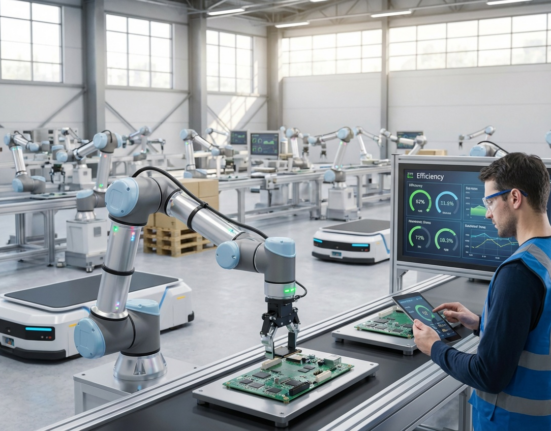Introduction: Why Upskilling Is Critical in Manufacturing Robotics
The manufacturing industry is evolving rapidly with the rise of robotics. While robots bring precision and efficiency, human expertise remains vital. Manufacturing robotics upskilling ensures workers gain the knowledge and confidence to work alongside robots, unlocking innovation and sustainable growth.
What Is Manufacturing Robotics Upskilling?
It’s the process of training workers to adapt to robotic systems, combining technical and soft skills for seamless human-robot collaboration.
The Importance of Robotics Upskilling in Manufacturing
Boosting Productivity
Trained workers optimize robot use, reducing errors and downtime.
Enhancing Safety
Knowledge of safety protocols ensures safer environments for workers.
Building Workforce Confidence
Upskilling reduces fear of automation by showing workers how robots complement their roles.
Driving Industry Innovation
Skilled workers contribute to smarter processes and product design.
Core Skills for Manufacturing Robotics Upskilling
Programming Basics
Learning robot programming languages and interfaces.
System Integration
Connecting robotics with existing production lines.
Maintenance and Troubleshooting
Ensuring robots run efficiently with minimal downtime.
Data Analytics
Interpreting data from robotic systems to improve performance.
Soft Skills Supporting Robotics Upskilling
Adaptability
Embracing rapid changes in technology and processes.
Problem-Solving
Addressing unexpected robotic issues quickly and effectively.
Collaboration
Working across teams to integrate robotics into workflows.
Communication
Sharing insights between engineers, operators, and management.
Training Programs for Manufacturing Robotics
Vendor Training
Programs from robotics companies like ABB, FANUC, and KUKA.
Technical Colleges & Universities
Offering certifications in robotics programming and integration.
Online Platforms
Courses on Coursera, Udemy, and MIT OpenCourseWare.
On-the-Job Training
Hands-on learning through apprenticeships and workshops.
Challenges in Manufacturing Robotics Upskilling
- Resistance to automation adoption.
- High costs of training programs.
- Time constraints for busy workers.
- Skill gaps in older workforce segments.
Best Practices for Workforce Upskilling
Start with Pilot Groups
Introduce training to small teams before scaling.
Combine Theory and Practice
Blend classroom lessons with hands-on workshops.
Encourage Lifelong Learning
Offer continuous training to keep skills up to date.
Measure Success
Track productivity and employee confidence post-training.
Industries Leading the Way in Robotics Upskilling
Automotive Manufacturing
Upskilling assembly line workers for robotics integration.
Electronics Manufacturing
Training employees for precision robotic assembly.
Food Processing
Upskilling workers for robotic packaging and safety standards.
Future Trends in Manufacturing Robotics Upskilling
AI-Powered Training
Adaptive platforms that personalize learning.
Virtual Simulations
Low-cost, risk-free training environments.
Global Certifications
Industry-wide standards validating robotics expertise.
Human-Robot Collaboration Focus
Skills centered on teamwork between people and robots.
Conclusion: Preparing the Workforce for a Robotic Future
Manufacturing robotics upskilling is the bridge between technology and people. By investing in training, companies empower workers to thrive alongside robots, creating safer, more productive, and innovative industries.
FAQ
1. What is manufacturing robotics upskilling?
It’s training workers to adapt and work effectively with robotic systems in manufacturing.
2. Why is upskilling important in robotics adoption?
It boosts safety, productivity, and employee confidence.
3. What skills are most important in robotics upskilling?
Programming, system integration, troubleshooting, and adaptability.
4. What are the challenges in upskilling workers?
Costs, resistance to change, and balancing training with daily duties.
5. What industries are leading robotics upskilling efforts?
Automotive, electronics, and food processing industries are leading adopters.








